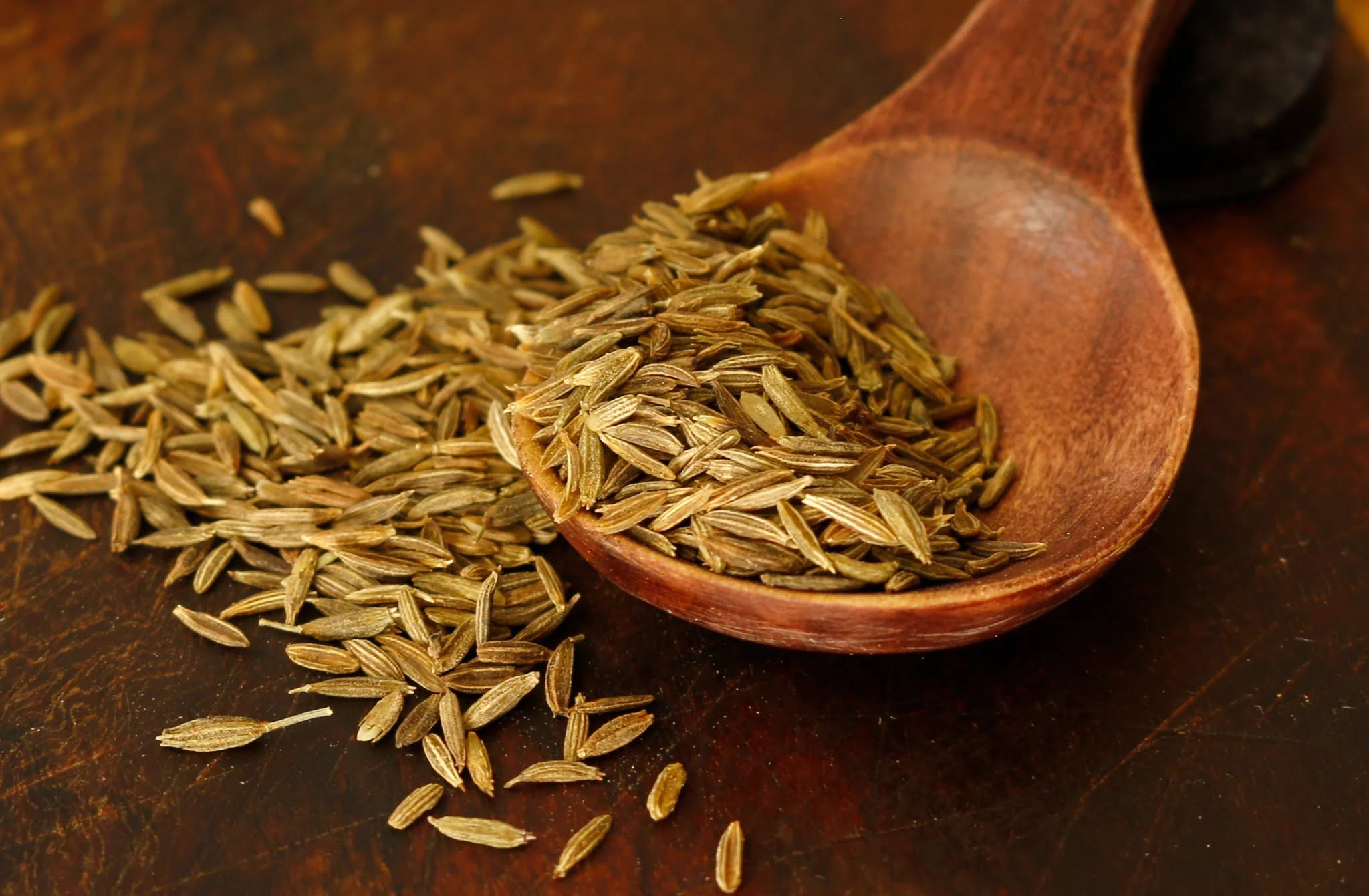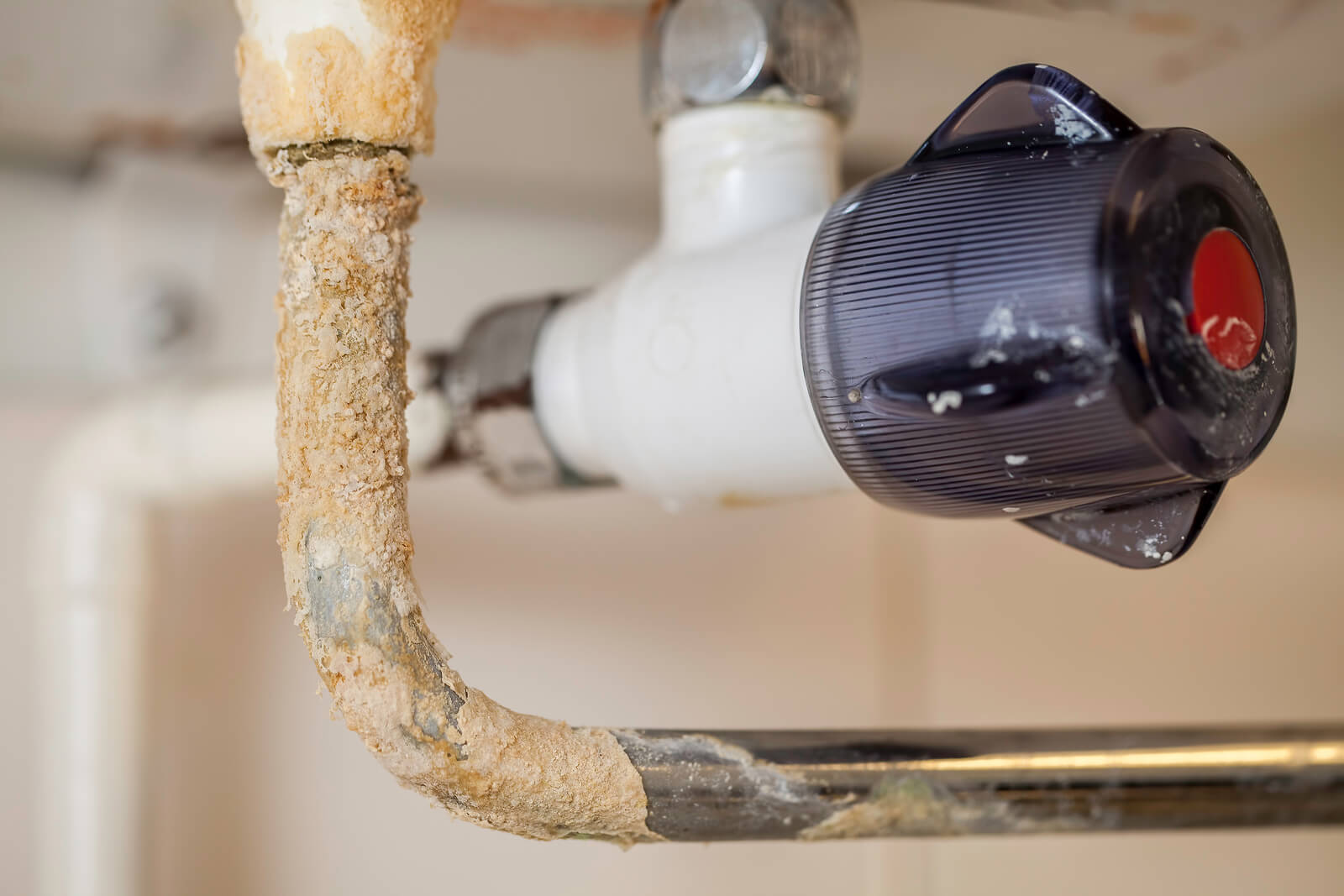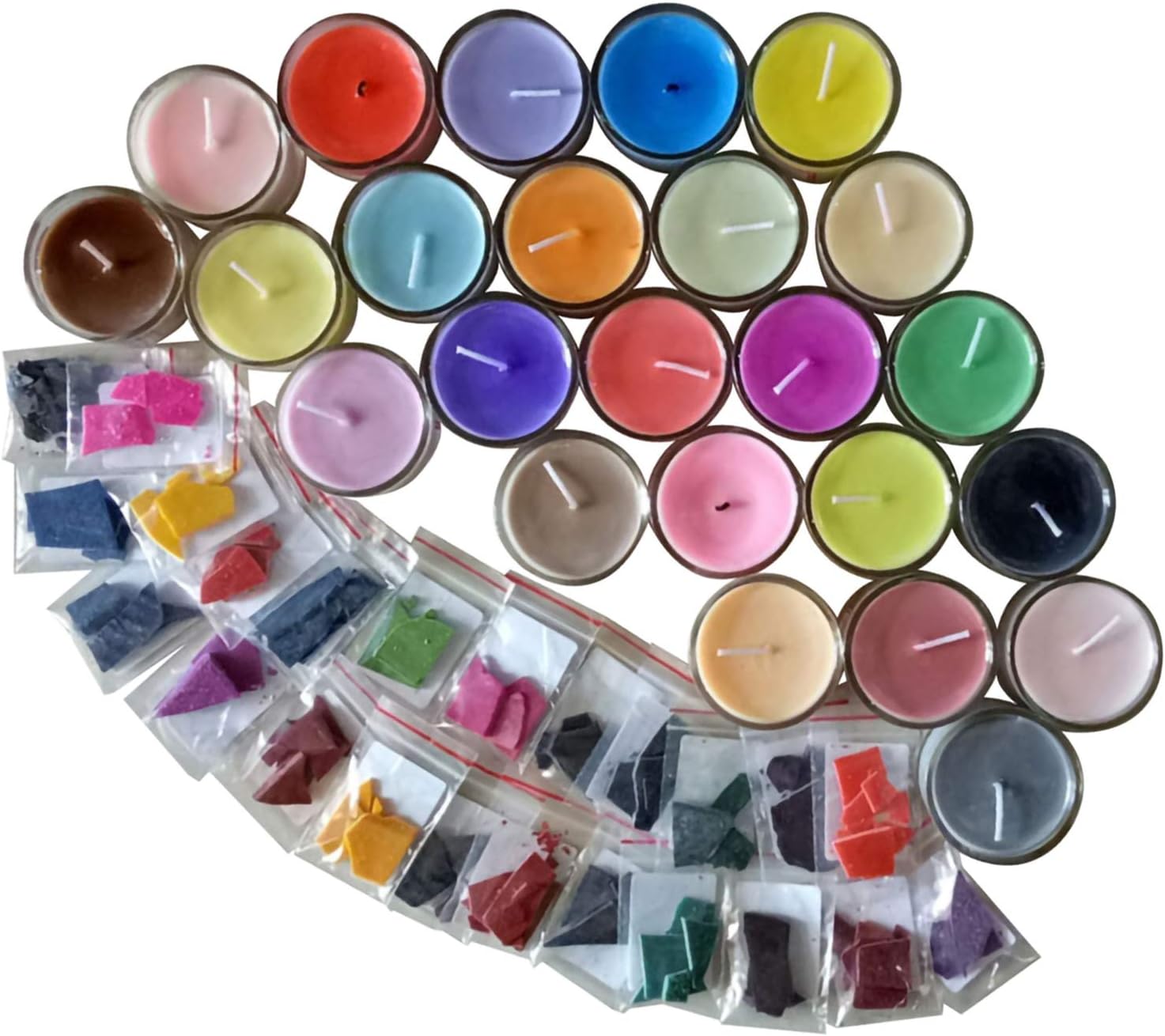

Articles
Where Does Wax Come From For Candles
Modified: January 9, 2024
Learn about the origins of wax used in candle making in our informative articles. Discover where this essential element comes from and its role in creating beautiful candles.
(Many of the links in this article redirect to a specific reviewed product. Your purchase of these products through affiliate links helps to generate commission for Storables.com, at no extra cost. Learn more)
Introduction
When you think of candles, one of the key components that come to mind is wax. Wax is the material that gives candles their shape, structure, and ability to burn. But have you ever wondered where this wax comes from?
In this article, we will delve into the fascinating world of wax production and explore the different sources of wax used for candles. From natural waxes like beeswax and soy wax to synthetic options like paraffin wax, each type of wax has its own unique characteristics and origin.
We will also discuss the environmental considerations and sustainability factors associated with the production and harvesting of these waxes. By understanding the origins and impacts of wax production, you can make more informed choices when it comes to selecting candles for your home or business.
So, let’s embark on this enlightening journey and discover where wax comes from for candles.
Key Takeaways:
- Beeswax, soy wax, and sustainably sourced palm wax offer eco-friendly options for candle lovers, supporting responsible practices and reducing environmental impact.
- Understanding the origins of candle wax empowers consumers to make informed, sustainable choices, promoting a greener future for the candle industry.
Read more: Where Does Jenga Come From
What is wax?
Wax is a natural substance that is solid at room temperature but melts when heated. It is primarily composed of long-chain hydrocarbons, which are organic compounds made up of carbon and hydrogen atoms. Wax is derived from various sources, including plants, animals, and synthetically produced materials.
One of the key properties of wax is its ability to burn. When a candle is lit, the heat of the flame melts the wax, creating a liquid pool that is drawn up the wick and vaporized to produce light and heat. The structure of wax allows it to burn slowly and evenly, providing a steady source of illumination.
Wax is also known for its malleability, which makes it easy to shape into candles of different sizes, shapes, and designs. It can be blended with dyes and fragrances to create scented and colored candles, adding to their aesthetic appeal.
There are several types of wax used for candle making, each with its own characteristics and qualities. The most common types include beeswax, paraffin wax, soy wax, and palm wax. Let’s explore each of these in more detail.
Types of wax used for candles
When it comes to candle making, there are several types of wax to choose from, each offering unique properties and benefits. Let’s take a closer look at some of the most commonly used types:
- Beeswax: Beeswax is a natural wax produced by honeybees. It is known for its pleasant honey-like fragrance and beautiful golden color. Beeswax candles have a long burn time and emit a warm, natural glow. They are also hypoallergenic and have air-purifying properties.
- Paraffin wax: Paraffin wax is a byproduct of petroleum refining. It is one of the most widely used waxes for candle making due to its affordability and versatility. Paraffin candles burn brightly and have a wide range of colors and fragrances available.
- Soy wax: Soy wax is made from soybean oil, a renewable resource. It is a popular choice for environmentally-conscious individuals due to its biodegradability and sustainability. Soy candles burn cleanly and evenly, with minimal soot and smoke.
- Palm wax: Palm wax is derived from the oil palm tree and is a sustainable alternative to other types of wax. It has a unique crystal-like appearance, making it ideal for creating decorative and artistic candles. Palm wax candles have a long burn time and excellent scent throw.
Each type of wax has its own benefits and considerations. Some people prefer the natural and traditional feel of beeswax, while others opt for the affordability and versatility of paraffin wax. Soy wax and palm wax offer eco-friendly options for those who prioritize sustainability.
Now that we’ve explored the different types of wax used for candles, let’s dig deeper into their sources and how they are produced.
Types of wax used for candles
Beeswax
Beeswax is a natural wax produced by honeybees as a construction material for their honeycomb. It is a unique and valuable wax due to its distinct properties and benefits.
Beeswax production begins in the beehive, where worker bees consume honey and excrete small wax scales from specialized glands on their abdomen. These bees then mold the wax into the hexagonal cells of the honeycomb structure. Beekeepers collect the beeswax by scraping it off the frames of the honeycombs.
Once collected, the beeswax undergoes a process of purification and filtering to remove impurities such as bee parts, pollen, and debris. This purified beeswax is then ready to be used for various purposes, including candle making.
Beeswax candles have gained popularity due to their natural fragrance, clean-burning properties, and long burn time. These candles emit a warm, soft glow and a subtle honey scent. They are also hypoallergenic, making them suitable for individuals with allergies or sensitivities.
Another advantage of beeswax candles is their air-purifying qualities. When burned, beeswax releases negative ions into the air, which can help neutralize pollutants and allergens, improving the indoor air quality.
It’s important to note that beeswax is a renewable resource, as long as responsible beekeeping practices are followed. Beekeepers prioritize the health and well-being of their bees to ensure the sustainability of beeswax production.
Overall, beeswax candles offer a natural and environmentally-friendly option for those seeking a unique and sustainable wax choice.
Types of wax used for candles
Paraffin wax
Paraffin wax is a widely used and readily available wax for candle making. It is a petroleum-based wax that is derived from crude oil during the refining process.
The production of paraffin wax begins with the extraction of crude oil from underground reservoirs. The crude oil is then refined, a process that involves the removal of impurities and the separation of different components, including paraffin wax.
Once the paraffin wax is isolated, it undergoes further refining and processing to enhance its properties for candle making. This includes adding additives to modify the melting point, color, fragrance, and other characteristics.
Paraffin wax candles are known for their affordability, availability, and versatility. They come in a wide variety of shapes, sizes, colors, and scents. Additionally, paraffin wax candles have a high fragrance-holding capacity, which allows for a stronger and longer-lasting scent throw when burned.
While paraffin wax candles offer many benefits in terms of affordability and fragrance options, there are some environmental considerations associated with their production and use. Since paraffin wax is derived from fossil fuels, its extraction and refining contribute to carbon emissions and the depletion of non-renewable resources.
However, it’s important to note that advances have been made in the production of more environmentally-friendly paraffin wax. Some manufacturers now offer paraffin waxes with lower carbon footprints and higher levels of renewable content.
As a consumer, you can look for paraffin wax candles that are produced using sustainable and responsible manufacturing practices or explore alternative wax options if environmental concerns are a priority.
Overall, paraffin wax candles continue to be a popular choice for their affordability, wide range of scents, and versatility, but it’s important to consider the environmental impact when making purchasing decisions.
Types of wax used for candles
Soy wax
Soy wax is a natural wax made from soybean oil, which is derived from soybeans, a renewable and sustainable resource. It has gained popularity in recent years as a more eco-friendly alternative to paraffin wax.
The production of soy wax involves several steps. First, the soybeans are cleaned, dehulled, and cracked. The cracked soybeans are then heated to extract the oil. The oil is then refined, hydrogenated, and transformed into a solid wax form.
One of the main advantages of soy wax is its eco-friendly nature. Soybeans are a renewable resource, and their cultivation helps support agricultural communities and reduces dependency on non-renewable resources. Additionally, soy wax is biodegradable, making it a more sustainable option compared to petroleum-based waxes like paraffin.
Soy wax candles offer several benefits. They burn cleanly and produce minimal soot and smoke, creating a healthier and more enjoyable environment. Soy wax also has a lower melting point than paraffin wax, resulting in longer burn times and the ability to evenly distribute fragrance throughout the candle.
Soy wax is also highly receptive to fragrances, allowing for a wide range of scent options. This makes soy wax candles a popular choice for those who enjoy scented candles.
It’s worth mentioning that not all soy waxes on the market are 100% pure soy. Some manufacturers blend soy wax with other additives, such as paraffin or vegetable waxes, for various reasons, including improving candle stability or reducing cost. If you desire a purely soy-based candle, be sure to check the labeling or product details.
Overall, soy wax candles provide an eco-friendly and clean-burning alternative to traditional paraffin candles. By choosing soy wax, you can enjoy the ambiance of a candle while being mindful of the environment.
Types of wax used for candles
Palm wax
Palm wax is a natural wax derived from the oil palm tree, mainly cultivated in tropical regions such as Southeast Asia and Africa. It is a versatile and sustainable option for candle making.
The extraction of palm wax involves harvesting the fruits of the oil palm tree and extracting the oil. The oil is then processed to remove impurities and solidify into a wax form. The wax has a distinctive crystal-like appearance, giving candles made from palm wax a unique and visually appealing aesthetic.
Palm wax has several advantages as a candle wax. It has a high melting point, which allows for longer burn times and excellent scent throw. Palm wax candles also have a natural glossy finish and good shape retention, making them ideal for decorative and pillar candles.
One of the key benefits of palm wax is its sustainability. When produced responsibly, palm oil cultivation can be conducted in a manner that maintains biodiversity, protects wildlife habitats, and supports local communities. Look for candles that are certified through sustainable palm oil initiatives, such as RSPO (Roundtable on Sustainable Palm Oil).
However, it’s important to be aware of the potential environmental concerns associated with palm wax production. Unsustainable palm oil cultivation has been linked to deforestation, habitat loss, and the displacement of indigenous communities. It is crucial to support companies that prioritize sustainable and responsible palm wax sourcing.
By choosing palm wax candles from sustainable sources, you can enjoy the benefits of a visually appealing and long-lasting candle while supporting environmentally responsible practices.
Overall, palm wax offers a sustainable and distinctive option for candle making, combining a visually striking appearance with environmental considerations.
Sources of wax for candles
There are several sources of wax used for candle making, ranging from natural materials to synthetic options. Let’s explore the different sources and how each wax is obtained.
Beeswax production
Beeswax is produced by honeybees as a natural wax to construct their honeycomb. Beekeepers collect beeswax by scraping it off the frames of the honeycombs. The collected beeswax is then purified and filtered to remove impurities, resulting in a clean and natural wax suitable for candle making.
Read more: Where Does Wax Go When Candles Burn?
Paraffin wax extraction
Paraffin wax, a petroleum-based wax, is derived from crude oil during the refining process. Crude oil is extracted from underground reservoirs and undergoes refining to remove impurities. The refined paraffin wax is further processed and modified to enhance its properties for candle making.
Soy wax manufacturing
Soy wax is made from soybean oil, which is derived from soybeans, an agricultural crop. Soybean oil is extracted from the soybeans and undergoes refining and hydrogenation processes to transform it into solid wax form. The soy wax is then ready for use in candle making.
Palm wax harvesting
Palm wax is derived from the oil palm tree, primarily grown in tropical regions. The tree’s fruits are harvested, and the oil is extracted from the fruits’ pulp. The extracted oil is then processed to remove impurities and solidify into wax form. The resulting palm wax has a distinctive crystal-like appearance.
It is important to note that each source of wax has its own benefits, sustainability considerations, and environmental impact. Beeswax offers a natural and renewable option, while paraffin wax provides affordability and versatility. Soy wax is known for its eco-friendly nature, and palm wax offers a visually appealing option with sustainable practices.
By understanding the sources of wax and their production methods, individuals can make informed choices when selecting candles, considering factors such as environmental impact, sustainability, and personal preferences.
Sources of wax for candles
Beeswax production
Beeswax, a natural wax used for candle making, is produced by honeybees within their hives. The process of beeswax production begins with the worker bees, who have specialized glands on their abdomen that produce small wax scales.
Worker bees consume honey as their energy source, which stimulates the production of wax in their glands. The bees then secrete the wax scales, which they use to construct the hexagonal cells of the honeycomb structure.
Beekeepers play an essential role in collecting beeswax for various purposes, including candle making. Once the beekeeper determines that there is an excess of honey and wax in the hive, they carefully remove the frames containing the honeycombs.
The frames are then processed to separate the honey from the beeswax. The comb containing the beeswax is gently scraped to collect the wax, which is often done using a hot knife or scraper tool. This process is performed with care to avoid disturbing the bees and to minimize any damage to the honeycomb.
After the collection, the beeswax undergoes a purification process to remove impurities. The beeswax is melted and filtered multiple times to eliminate any debris, bee parts, or pollen that may be present. This ensures that the final beeswax is clean and suitable for use in candle making.
Beeswax candles have gained popularity due to their unique properties. They have a warm, natural scent reminiscent of honey, and they emit a soft, golden glow when burned. Beeswax candles are known for their long burn time and clean-burning capabilities, producing little to no soot or smoke.
It’s important to note that the production of beeswax relies on the health and well-being of honeybee colonies. Sustainable beekeeping practices, including providing adequate food sources and habitat, are crucial for ensuring the sustainability of beeswax production.
By choosing beeswax candles, you support sustainable beekeeping and enjoy the benefits of a natural and renewable wax option.
Sources of wax for candles
Read more: Where Does Wax Go When Candles Burn?
Paraffin wax extraction
Paraffin wax is one of the most commonly used waxes for candle making and is derived from crude oil, a fossil fuel. The process of extracting paraffin wax begins with the extraction of crude oil from underground reservoirs.
Crude oil is a mixture of hydrocarbon compounds found in geological formations beneath the Earth’s surface. It is extracted through drilling wells and pumping the oil to the surface.
Once the crude oil is extracted, it undergoes a refining process to remove impurities and separate different components, including paraffin wax. Refining involves several steps, such as heating, distillation, and filtration.
During the refining process, the crude oil is heated to high temperatures to separate it into its various components based on their boiling points. The paraffin wax, which has a relatively high boiling point, is separated from other components present in the crude oil.
After separating the paraffin wax, it undergoes further processing to enhance its characteristics for candle making. This can include adding additives to modify the melting point, improve fragrance retention, and enhance color options.
The resulting paraffin wax is then cooled and solidified into blocks or pellets, ready to be used as a primary component in the production of candles.
Paraffin wax candles offer advantages such as affordability, versatility, and a wide range of color and fragrance options. They are widely available and commonly used in commercial and household candles.
However, it is important to consider the environmental impact associated with paraffin wax production. The extraction, refining, and processing of crude oil contribute to carbon emissions and the depletion of non-renewable resources.
As a conscious consumer, you can opt for candles made from alternative waxes, such as soy or beeswax, which offer more sustainable options.
By understanding the process of paraffin wax extraction, you can make informed choices when selecting candles and consider their environmental impact.
Sources of wax for candles
Soy wax manufacturing
Soy wax is a natural wax made from soybean oil, which is derived from soybeans, a sustainable and renewable agricultural crop. The manufacturing process of soy wax involves several steps to transform the soybean oil into a solid wax suitable for candle making.
The production of soy wax begins with the cultivation of soybeans. Once the soybeans are harvested from the fields, they undergo a cleaning process to remove any impurities such as dirt or debris.
After cleaning, the soybeans are dehulled to remove the outer shells. Then, they undergo a process called cracking, where they are partially crushed into smaller pieces.
Next, the cracked soybeans are rolled into flakes, which are then heated and subjected to a mechanical pressing process. This pressing process extracts the soybean oil from the flakes.
The extracted soybean oil undergoes further refinement and purification to remove impurities and enhance its quality. This can involve processes such as degumming, bleaching, and deodorizing.
Once the soybean oil is purified, it is hydrogenated. Hydrogenation is a process that converts the liquid oil into a solid form by adding hydrogen atoms, transforming it into the final soy wax.
During the hydrogenation process, the soybean oil undergoes controlled heat and pressure conditions, which allow for the development of the desired wax-like consistency.
The resulting soy wax is then cooled and solidified into various forms, such as flakes, pellets, or blocks, depending on its intended use for candle making.
Soy wax candles have gained popularity due to their eco-friendly nature. Soybeans are a renewable resource, and their cultivation supports sustainable agricultural practices. Soy wax candles also offer benefits such as clean burning, minimal soot and smoke, and excellent fragrance retention.
It’s important to note that not all soy waxes are 100% pure soy. Some manufacturers may blend soy wax with other additives, such as paraffin or vegetable waxes, for various reasons. If you prefer a fully soy-based candle, be sure to check the labeling or product details.
By choosing soy wax candles, you can enjoy the benefits of a natural and environmentally-friendly wax option while supporting sustainable agriculture.
Sources of wax for candles
Palm wax harvesting
Palm wax is a natural wax derived from the oil palm tree, mainly cultivated in tropical regions such as Southeast Asia and Africa. The harvesting of palm wax involves a process that begins with the cultivation and growth of the oil palm tree.
The oil palm tree, scientifically known as Elaeis guineensis, produces fruit bunches that contain a mixture of pulp, oil palm kernels, and oil. The oil palm tree is known for its high oil content and is primarily grown for the production of palm oil.
The palm wax is obtained as a byproduct during the extraction of palm oil. When the oil palm fruit bunches are harvested, they are transported to palm oil mills for processing.
At the palm oil mill, the fruit bunches go through a series of steps to separate the various components. The fruit bunches are sterilized, threshed, and stripped to separate the palm kernels, which contain palm oil and palm wax.
The palm kernels are first processed to extract the palm oil. This involves crushing and pressing the kernels to release the oil. The remaining solid portion, known as palm kernel cake, is often used as animal feed.
After the extraction of the palm oil, the residual mixture undergoes further processing to separate the palm wax. The mixture is subjected to a refining process that includes filtration and cooling.
During the cooling process, the palm wax solidifies and separates from the other components. The solidified palm wax is then collected and further processed to remove impurities and achieve the desired quality for candle making.
Palm wax has a unique crystal-like appearance, making it popular for decorative and artistic candles. It has a high melting point, resulting in longer burn times and excellent scent throw when used in candles.
It’s important to note that there are environmental considerations associated with palm wax production. Unsustainable palm oil cultivation practices can lead to deforestation, habitat loss, and the displacement of indigenous communities.
However, there are sustainable palm oil initiatives and certifications, such as the Roundtable on Sustainable Palm Oil (RSPO), that promote responsible palm oil production and the preservation of biodiversity and community rights.
By choosing candles made from sustainably sourced palm wax and supporting certified palm oil initiatives, you can enjoy the benefits of palm wax candles while contributing to sustainable practices.
Environmental considerations
When it comes to selecting candles, considering the environmental impact is important. Different types of waxes used for candle making have varying sustainability and ecological factors to take into account. Here are some environmental considerations to keep in mind:
Read more: Where Does Poppy Seed Come From
Beeswax sustainability
Beeswax is considered a sustainable option for candle making. Beeswax is a natural byproduct of honey production, and beekeepers can collect it without harming the bees or their habitats. Responsible beekeeping practices, such as providing adequate food sources and maintaining hive health, contribute to the long-term sustainability of beeswax production.
Environmental impact of paraffin wax
Paraffin wax, being a petroleum-based wax, has some environmental concerns. The extraction and refining processes of crude oil, from which paraffin wax is derived, can contribute to carbon emissions and the depletion of non-renewable fossil fuel resources. However, advancements have been made to produce more sustainable and eco-friendly paraffin waxes, such as those with a higher renewable content or sourced from responsible suppliers.
Advantages of soy wax
Soy wax is often considered an environmentally-friendly option for candle making. Soybeans are a renewable resource, and soy wax production supports sustainable agricultural practices. Soy wax is biodegradable, meaning it breaks down naturally without leaving lasting environmental impacts. Additionally, soy wax candles produce minimal soot and smoke, providing a cleaner and healthier indoor air quality.
Sustainable practices for palm wax
The production of palm wax raises concerns related to sustainable palm oil production. Unsustainable palm oil cultivation can contribute to deforestation, habitat loss for endangered species, and the displacement of indigenous communities. Supporting candles made from sustainably sourced palm wax, certified by initiatives like the Roundtable on Sustainable Palm Oil (RSPO), promotes responsible palm oil production and helps protect biodiversity and community rights.
As consumers, we can make purchasing choices that align with our values and support eco-friendly options. By opting for sustainably sourced waxes or exploring alternatives like beeswax, soy wax, or responsibly produced palm wax, we contribute to a more sustainable and environmentally-conscious candle industry.
It’s important to keep in mind that beyond the type of wax used, other factors such as packaging materials, dyes, and fragrances can impact the overall environmental footprint of candles. Choosing candles that prioritize eco-friendly packaging and use natural or non-toxic ingredients for coloring and scenting can further enhance the sustainability of your candle choices.
Environmental considerations
Read more: Where Does Poppy Seed Come From
Beeswax sustainability
Beeswax, a natural wax produced by honeybees, is often considered an environmentally sustainable option for candle making. The sustainability of beeswax is linked to the responsible practices of beekeeping and the health of honeybee populations.
Beekeeping practices that prioritize the well-being of bees contribute to the long-term sustainability of beeswax production. This includes providing bees with ample food sources, maintaining healthy hives, and ensuring access to suitable habitats.
Beeswax production is a byproduct of honey production. Beekeepers collect excess beeswax from the honeycombs when extracting honey. This process does not harm the bees or disrupt their natural behavior.
In fact, beekeeping can support the conservation and preservation of honeybee populations. Bees play a crucial role in pollinating flowering plants, including agricultural crops and wild plants, contributing to ecosystem health and biodiversity.
By supporting local beekeepers who follow sustainable practices, you are not only promoting the sustainability of beeswax production but also supporting the crucial role that honeybees play in the environment.
It’s important to note that beeswax production can vary based on geographical location and beekeeping practices. Some regions have regulations and certifications in place, such as organic certifications or local beekeeping associations that promote sustainable beekeeping.
When purchasing beeswax candles, look for products that are sourced from responsible beekeepers who prioritize the health and well-being of their honeybees. Supporting local beekeepers can also help sustain pollinator populations and contribute to the preservation of ecosystems.
By choosing beeswax candles, not only do you enjoy the warm glow, natural fragrance, and long burn time, but you also contribute to sustainable beekeeping practices and the conservation of honeybee populations and their habitats.
Environmental considerations
Environmental impact of paraffin wax
Paraffin wax, as a petroleum-based wax, does have some environmental concerns associated with its production and use. The extraction and refining processes involved in obtaining paraffin wax from crude oil can contribute to negative environmental impacts.
The extraction of crude oil, which is the raw material for paraffin wax, requires drilling wells and can lead to habitat disruption, soil contamination, and the release of greenhouse gases during extraction and transportation.
Furthermore, the refining process of crude oil to obtain paraffin wax involves additional energy consumption and the use of chemicals to purify and separate the wax from other components present in the crude oil.
The extraction and processing of crude oil also contribute to carbon emissions, which contribute to climate change. The burning of paraffin wax candles releases carbon dioxide into the atmosphere, further contributing to greenhouse gas emissions.
However, it’s worth mentioning that there have been efforts within the industry to develop more sustainable and eco-friendly paraffin waxes. Some manufacturers offer paraffin waxes with a higher percentage of renewable content or produced from responsibly sourced crude oil.
Additionally, the environmental impact of paraffin wax candles can be mitigated through responsible candle usage. For example, trimming the wick and avoiding drafts can help reduce soot and maximize burn time, thus reducing waste.
As a consumer, one way to address the environmental impact of paraffin wax is to consider alternative wax options. There are various eco-friendly alternatives available, such as soy wax, beeswax, and palm wax, each with its own sustainable attributes.
When purchasing paraffin wax candles, consider looking for those from responsible manufacturers who prioritize sustainability. Some companies may support carbon offset initiatives or follow environmentally responsible practices throughout their production and supply chain.
By making conscious choices and supporting environmentally responsible candle options, we can minimize the environmental impact of paraffin wax and contribute to a more sustainable and eco-conscious lifestyle.
Environmental considerations
Advantages of soy wax
Soy wax has gained popularity as an environmentally-friendly alternative to traditional paraffin wax. It offers several advantages that make it an attractive option for candle making.
One of the primary advantages of soy wax is its eco-friendliness. Soybeans, the raw material for soy wax, are renewable and biodegradable. Cultivating soybeans supports sustainable agricultural practices and reduces dependency on non-renewable resources.
In addition to being sustainable, soy wax is also known for its clean-burning properties. When burned, soy wax candles produce minimal soot, smoke, and air pollutants. This creates a healthier and cleaner environment, especially for individuals with respiratory sensitivities or allergies.
Another advantage of soy wax is its longer burn time. Soy wax has a lower melting point than paraffin wax, meaning it burns at a slower rate. This results in longer-lasting candles and more value for your money.
Soy wax also has excellent fragrance-holding qualities. It has the ability to carry and release scents effectively, providing a strong and long-lasting fragrance experience. Whether you prefer subtle or bold aromas, soy wax can accommodate a wide range of fragrance intensities.
Furthermore, soy wax is highly receptive to dye, allowing for vibrant and consistent color options for candles. Whether you prefer natural pastel shades or bold and vibrant hues, soy wax can be easily tinted to suit your aesthetic preferences.
As a natural wax, soy wax is biodegradable, meaning it can break down and decompose naturally and environmentally. This reduces the amount of waste generated and contributes to a more sustainable lifestyle.
It’s worth mentioning that not all soy waxes in the market are 100% pure soy. Some may be blended with additives or other waxes. Therefore, it’s important to read product labels or choose candles from reputable manufacturers who clearly state the composition of their wax.
Overall, the advantages of soy wax, including its sustainability, clean-burning properties, longer burn time, fragrance-holding capabilities, and ability to be easily dyed, make it a popular choice for those seeking an eco-friendly and high-quality candle option.
Environmental considerations
Sustainable practices for palm wax
Palm wax, derived from the oil palm tree, can be produced in a sustainable manner when responsible practices are followed. Here are some key aspects of sustainable palm wax production:
1. Responsible sourcing: It is important to support palm wax that comes from sustainably sourced palm oil. Look for candles labeled with certifications such as the Roundtable on Sustainable Palm Oil (RSPO) or other sustainable palm oil initiatives. These certifications ensure that the palm oil used in the production of the wax is obtained from plantations that comply with strict environmental and social standards.
2. Avoiding deforestation: Sustainable palm wax production involves avoiding deforestation and protecting biodiversity. Palm oil plantations should prioritize conserving natural habitats, including high-conservation-value areas, critical wildlife habitats, and carbon-rich peatlands. Companies that adhere to sustainable practices often work towards zero deforestation commitments and employ best management practices to minimize the environmental impact of palm oil cultivation.
3. Community involvement: Sustainable palm wax production involves engaging and benefiting local communities. Ethical producers work with local farmers and communities, respecting their rights, providing fair compensation, and supporting social development initiatives. This helps to ensure that the economic benefits of palm oil production are shared equitably.
4. Improved agronomic practices: Sustainable palm oil producers adopt responsible agronomic practices to optimize productivity and minimize the environmental footprint. These practices include efficient water and fertilizer use, integrated pest management, and soil conservation techniques. By reducing inputs and minimizing negative environmental impacts, sustainable palm wax production contributes to a more vibrant and sustainable ecosystem.
5. Certification and transparency: Transparent supply chains and traceability are key elements of sustainable palm wax production. Certifications like RSPO provide assurance that the palm oil and wax used in candles are sourced responsibly and meet strict sustainability criteria. Transparent labeling and clear communication from manufacturers about their sustainability initiatives enable consumers to make informed choices.
By supporting candles made from sustainably sourced palm wax, you are encouraging responsible palm oil production, protecting ecosystems, and supporting the well-being of local communities.
It is important to note that sustainable palm wax is a nascent industry, and challenges remain in ensuring widespread adherence to sustainability practices. However, supporting companies that actively promote sustainable palm wax can drive positive change and encourage the industry to transition to more sustainable practices.
Together, by choosing candles made from sustainably sourced palm wax and supporting responsible palm oil production, we can contribute to a more sustainable and eco-conscious future.
Read more: Where Does Chia Seeds Come From
Conclusion
Candles are a beloved part of our lives, bringing warmth, ambiance, and a sense of tranquility to any space. Understanding the sources of wax used for candles and their environmental considerations allows us to make more informed choices as consumers.
Beeswax, derived from honeybees, offers a natural and sustainable option. It not only provides a warm glow and pleasant fragrance but also supports responsible beekeeping practices and the conservation of honeybee populations.
Paraffin wax, being a petroleum-based wax, raises concerns due to its environmental impact. However, advancements in sustainable paraffin wax production are being made, with companies offering options with higher renewable content and responsible sourcing.
Soy wax, made from soybean oil, has gained popularity for its eco-friendly nature. It burns cleaner, emits less soot and smoke, and supports sustainable agriculture. Soy wax also provides excellent fragrance retention and longer burn times.
Palm wax, derived from the oil palm tree, offers a visually appealing option, but its production must prioritize sustainable practices. By supporting sustainably sourced palm wax, certified by initiatives like the RSPO, we contribute to responsible palm oil production and the protection of biodiversity and local communities.
When choosing candles, considering their environmental impact is crucial. Look for sustainable practices, certifications, and transparent sourcing. Opt for candles made from renewable and responsibly sourced waxes, such as beeswax, soy wax, or palm wax from certified sustainable sources.
Ultimately, by opting for environmentally-friendly candle options, we can enjoy the beauty and ambiance of candles while reducing our ecological footprint. Together, we can make a positive impact on the environment and support a more sustainable and conscious candle industry.
So, next time you light a candle, let it be a symbol of not just warmth and light, but also of mindful choices and a commitment to a greener future.
Frequently Asked Questions about Where Does Wax Come From For Candles
Was this page helpful?
At Storables.com, we guarantee accurate and reliable information. Our content, validated by Expert Board Contributors, is crafted following stringent Editorial Policies. We're committed to providing you with well-researched, expert-backed insights for all your informational needs.







0 thoughts on “Where Does Wax Come From For Candles”